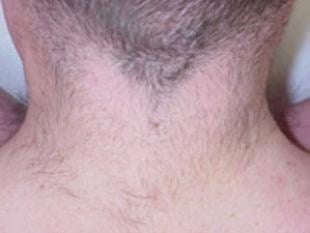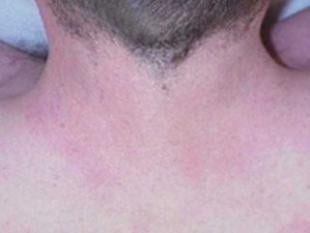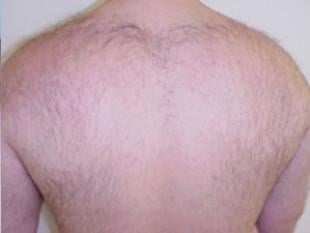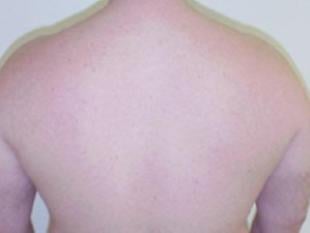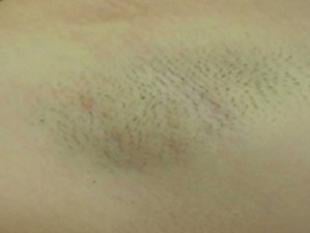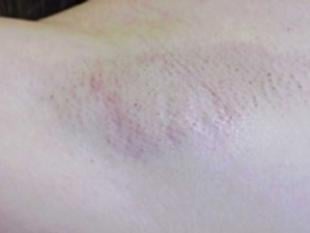Lasers provide patients and professionals with effective results that last. But how exactly do they work? And which laser treatment is the right choice for certain cosmetic issues?
Leading plastic surgeon Dr. Joshua Korman utilizes aesthetic laser treatments to help his patients feel more confident in their skin. A consultation with Dr. Korman is the first step in determining if laser treatments are right for you. He will assess your skin and discuss the best options for you based on your individual needs. To schedule an appointment, please call your nearest location using one of the numbers below, or fill out our online form for more details.
Mountain View: (650) 254-1200
San Jose: (408) 831-6229
Carmel: (831) 656-9331
Before and After Photos
What Can Aesthetic Lasers Do?
Aging and the environment around us can cause a variety of changes in our skin, including wrinkles, fine lines, age spots, sun damage, and poor texture. And since the 1980s, lasers have been used in many different ways to help patients address these issues and reach their aesthetic aspirations.
- Rejuvenate Skin
Laser treatments can help to restore a healthy, youthful-looking complexion by targeting these issues.
- Remodel Tissue
Lasers can also be used to improve the appearance of unwanted fat deposits on the face and body.
- Remove Scars
Lasers can be used to reduce the appearance of scars by targeting the scar tissue and stimulating the production of new collagen and elastin.
- Remove Tattoos
Over several sessions, lasers can be used to break down the pigments in the ink.
- Remove Hair
Laser hair removal can remove unwanted hair on the arms, back, bikini line, legs, face, and under the arms.
Photothermolysis Explained
Most laser procedures involve a process called photothermolysis. Photothermolysis is based on the principle that light energy can be used to coagulate and remove tissue or cause tissue remodeling and rejuvenation. It works by targeting specific areas of the skin with different wavelengths of light, which are then absorbed by the cells in the target area. This absorption of light causes heat to be generated within the cells, leading to the desired effects.
An example of a procedure that uses photothermolysis is laser resurfacing, which removes the outer layers of damaged skin to reveal healthier, smoother skin underneath. Laser resurfacing can:
- Reduce Wrinkles
- Lessen Fine Lines
- Refine Pore Size
- Smooth Texture
- Even Out Skin Tone
- Reduce Superficial Scars
The benefits of photothermolysis are numerous. In addition to reducing the signs of aging, it can also improve acne scarring and other discoloration, as well as removing unwanted hair on the face, neck, chest, legs, and arms.
Types of Aesthetic Laser
Non-Ablative Lasers
Non-ablative lasers are designed to penetrate deep into the dermis without damaging the outer layer of the skin. They stimulate collagen production and enhance blood circulation, which helps to improve skin tone and texture. Treatments are often used to reduce wrinkles, improve skin pigmentation, and address minor scars. They can also be used in skin texture and tone maintenance. Non-ablative laser treatments usually require fewer sessions than ablative treatments and have little to no downtime.
Ablative Lasers
Ablative lasers are used to treat deeper layers of skin and remove certain skin imperfections. This is achieved by removing the epidermal and superficial dermal layers of the skin. Ablative lasers emit short pulses of intense light that vaporize these tissues, removing the damaged cells along with the imperfections. This type of laser treatment helps to improve wrinkles, age spots, acne scars, and other skin imperfections by stimulating new collagen production and creating smoother, firmer skin. It is a more invasive procedure than other laser treatments and requires some downtime as the skin heals.
Fractional Lasers
Fractional lasers are a hybrid of ablative and non-ablative lasers. They use tiny beams of light energy to create microscopic columns in the skin, which triggers the body’s natural healing process. This causes collagen production to increase, leading to more youthful, rejuvenated skin. Fractional lasers are used to reduce wrinkles, acne scars, sun damage, and other signs of aging.
PicoSecond Lasers
Picosecond lasers are the most advanced type of aesthetic laser on the market today. They emit ultra-short pulses of energy that break down pigment particles, allowing them to be safely removed by the body. Picosecond lasers are highly effective for hair removal, tattoo removal, and skin pigmentation issues.
Candidates
Although candidacy for each procedure will vary according to its type, there are some general safety rules for laser treatments.
- Patients should be in good general health and have no serious issues, such as blood clotting disorders, that could potentially affect the safety and effectiveness of the procedure.
- In most cases, people who are prone to raised or keloid scarring seek out a different form of treatment, as laser treatments will not be suitable.
- Although some non-ablative lasers and light energy devices are suitable for darker skin, it may not be possible to undergo some treatments if you have very dark skin because of the risk of permanent scarring.
In all cases, Dr. Korman will provide written instructions to follow before any procedure. Patients should follow these closely to ensure they get the most beneficial results.
Personal Consultation
The first step in any laser treatment plan is scheduling a personal consultation. During your appointment, Dr. Korman will evaluate your skin condition and discuss the best course of action for your goals. He will also review all the risks and potential side effects associated with laser treatments. Your medical history will also be taken into consideration to ensure that this procedure is safe and effective. You will also receive detailed instructions on what to do before and after the procedure.
Dr. Korman understands that every patient has unique needs and concerns. To learn more about our laser treatments or to schedule a consultation, please get in touch.
Laser Treatments at Korman Plastic Surgery
SmartLipo
SmartLipo is a minimally invasive procedure that utilizes laser energy and liposuction to melt away fat deposits in the body and contour the area. It can be used to treat areas like the neck, arms, abdomen, thighs, and more. The procedure requires only a few tiny incisions in the skin, and the resulting recovery period is much shorter than with other types of liposuction. SmartLipo also has the advantage of stimulating collagen production, which can help improve the tone and texture of the skin.
MicroLaserPeel
The MicroLaserPeel is an ablative laser resurfacing treatment that uses a high-precision beam of light to remove the outer layer of damaged skin cells. This treatment helps to reduce wrinkles, reduce sun damage, improve the appearance of scars, and even out skin tone. It can be used on the face, neck, chest, and hands. After the procedure, there may be some redness and swelling, but these side effects usually dissipate quickly.
ProFractional
The Sciton ProFractional is a fractional Er:YAG laser. This treatment is designed to treat deeper wrinkles and skin imperfections. It works by creating a series of microscopic wounds that stimulate the body to produce more collagen. Results are visible after one session, but maximum results are usually seen after three sessions.
PicoWay
The PicoWay laser helps you say goodbye to unwanted ink and unwanted body hair. This advanced picosecond laser technology is highly effective at removing tattoos, regardless of the size, location, or color. Laser hair removal is a quick, easy procedure that does not require maintenance sessions. For tattoo removal, treatment can take up to 10 sessions to complete, depending on the complexity of the design.
Find out more about laser treatments at Korman Plastic Surgery on our blog.
Cost of Laser Skin Rejuvenation in Mountain View
The cost of your treatment will be determined once you have discussed your goals with Dr. Korman. To book your personal consultation, call your nearest location or complete a simple form on our website.
Mountain View: (650) 254-1200
San Jose: (408) 931-6229
Carmel: (831) 656-9331
FAQs
How long do laser resurfacing results last?
The results of laser resurfacing are long-lasting and can last for years depending on how well you care for your skin. Sun protection is essential for preserving the results of laser resurfacing, as sun exposure will cause premature aging.
How often can I have aesthetic laser treatments?
The frequency of laser treatments depends on the area being treated and the patient’s individual goals. Some treatments require more than one session to achieve the desired results, while others can be done in a single session. During your consultation, Dr. Korman will discuss the best options for you and how often you should return for additional treatments.
What is recovery like after laser treatments?
Most patients experience little to no downtime after an aesthetic laser procedure, though this will vary depending on the treatment. Swelling, redness, and itching are normal side effects that should resolve within a few days. Your doctor will provide you with a set of post-procedure instructions that should be followed closely to ensure proper healing and maximum results.
References
- Zhang S, Duan E. Fighting against Skin Aging. Cell Transplantation. 2018;27(5):729-738. doi:https://doi.org/10.1177/0963689717725755
- Verma N, Yumeen S, Raggio BS. Ablative Laser Resurfacing. PubMed. Published 2020. https://www.ncbi.nlm.nih.gov/books/NBK557474/




